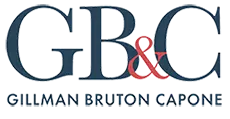“Honestly is the best policy”. While the origins of the phrase are arguably linked to Thomas Jefferson, Benjamin Franklin, and even as far back as William Shakespeare, recent history and daily events lead many to believe that those whose conduct is not governed by that belief are greatly rewarded for their deceit. The decision of the United States Supreme Court in Lamar, Archer & Cofrin, LLP v. Appling, 584 U.S. ___ (2018), 2017 U.S. LEXIS 3913, may be used to provide support their beliefs. In Lamar, the Court held that the Bankruptcy Code permits the discharge of a debt for legal fees owed to a law firm by a client who repeatedly and materially deceived his attorneys about the specific manner in which he intended to pay their fees.
Facts of the Case
The undisputed facts which gave rise to this matter are familiar to any attorney who has represented clients who were involved in protracted legal proceeding and who, for whatever reason, stopped paying for the law firms services as the accrued.
Appling hired the law firm of Lamar, Archer & Cofrin, LLP (“Lamar”), for representation in business litigation. Appling fell behind on his bills owed to Lamar, which threatened to withdraw representation and place a lien on its work product if Appling did not pay. Appling told Lamar that he could cover owed and future legal expenses with an expected tax refund. Lamar agreed to continue representation. However, Appling used the refund, which was for much less than he had stated, for business expenses. When he met with Lamar again, he told the firm he was still “waiting on the refund”, so Lamar agreed to complete pending litigation. Appling never paid the final invoice, so Lamar sued him and obtained a judgment. Shortly thereafter, Appling and his wife filed for Chapter 7 bankruptcy.
The Litigation
Lamar filed an adversary proceeding in the Bankruptcy Court and argued that the debt Appling owed to it was not dischargeable because of Appling’s false representations. The Bankruptcy Court found that Appling knowingly made two false representations on which Lamar justifiably relied and that Lamar incurred damages as a result of these false representations.
Lamar alleged that the debt owed by Appling was non-dischargeable under 11 U. S. C. §523(a)(2) which bars discharge of debts under two separate theories. Under §523(a)(2)(A), debts arising from “false pretenses, a false representation, or actual fraud, other than a statement respecting the debtor’s . . . financial condition” (emphasis added). Or, in the alternative, under §523(a)(2)(B), debts incurred by the “use of a statement in writing (i) that is materially false; (ii) respecting the debtor’s or an insider’s financial condition; (iii) on which the creditor to whom the debtor is liable for such money, property, services, or credit reasonably relied; and (iv) that the debtor caused to be made or published with intent to deceive.
Appling argued that his alleged misrepresentations were “statements respecting his financial condition” and that §523(a)(2)(A) did not apply. Further, as the statements were not “in writing”, they did not meet the requirements of §523(a)(2)(B).
The Bankruptcy Court concluded that Appling’s debt to Lamar was nondischargeable under §523(a)(2)(A). In particular, in a pretrial Motion to Dismiss the Complaint the Bankruptcy Court for the Middle District of Georgia held that a statement regarding a single asset is not a “statement respecting the debtor’s financial condition”.
On appeal, the the District Court affirmed the Bankruptcy Court’s holding. However, the Eleventh Circuit Court of Appeals then reversed the lower rulings. The Court of Appeals found no support for the “exception” for a “statement about a single asset” and held that §523(a)(2)(A) did not apply. Further, since Appling’s statements about his tax refund were not in writing, §523(a)(2)(B) did not bar Appling from discharging his debt to Lamar.
The Supreme Court
Lamar appealed to the Supreme Court which granted certiorari to resolve a conflict among the Courts of Appeals as to whether a statement about a single asset can be a “statement respecting the debtor’s financial condition.” The key issue presented to the Supreme Court was whether the term “financial condition” was intended to apply to a single asset or whether it was intended to apply to the debtor’s overall balance sheet.
Lamar made two arguments which both proved ineffective. First, Lamar argued that despite the apparently clear language of the statute, the Court should read the word “respecting” as suggesting a narrow interpretation which would not include a statement about a single asset like Appling’s tax refund. Lamar sought to parse the statutory text in an effort to suggest that §523(a)(2)(A) would be limited to formal financial statements and similarly comprehensive reviews of a debtor’s “financial condition” which capture the debtor’s overall financial status.
Justice Sonia Sotomayor, writing for the Court, held that Lamar’s narrow view of the statute was not supported by either the Code or prior interpretations of similar phrases.
A single asset has a direct relation to and impact on aggregate financial condition, so a statement about that asset bears on a debtor’s overall financial condition and can help indicate whether a debtor is solvent or insolvent. A statement about a single asset, thus, can be a “statement respecting the debtor’s financial condition.
Lamar also argued that the Bankruptcy Code was not intended to reward dishonest debtors and that Appling’s interpretation of §523(a)(2)(A) leaves “fraudsters” free to “swindle innocent victims for money, property or services by lying about their finances, then discharge the resulting debt in bankruptcy, just so long as they do so orally.”
The Supreme Court rejected this portion of Lamar’s argument noting the heightened statutory standard required to bar discharge under §523(a)(2)(A). Drawing upon a prior case which included “legislative intent”, Justice Sotomayor writes that the statutory language was “Congress’ effort to balance the potential misuse” of statements by both debtors and creditors (emphasis added). Three Justices declined to affirm this portion of the opinion — likely due to those Justice’s disdain for the reliance on “legislative intent” in its finding.
Conclusion
Thus, the Supreme Court affirmed the decision of the Eleventh Circuit, and held that Appling could discharge the debt owed to Lamar as Appling’s statement about a single asset was a statement respecting his financial condition and therefore §523(a)(2)(A) did not bar discharge. In conclusion, the Court advised creditors that protection under the Bankruptcy Code can be easily secured by obtaining representations about financial condition in writing.
Finally, although Lamar tries to paint a picture of defenseless creditors swindled by lying debtors careful to make their financial representations orally, creditors are not powerless. They can still benefit from the protection of §523(a)(2)(B) so long as they insist that the representations respecting the debtor’s financial condition on which they rely in extending money, property, services, or credit are made in writing. Doing so will likely redound to their benefit, as such writings can foster accuracy at the outset of a transaction, reduce the incidence of fraud, and facilitate the more predictable, fair, and efficient resolution of any subsequent dispute.


